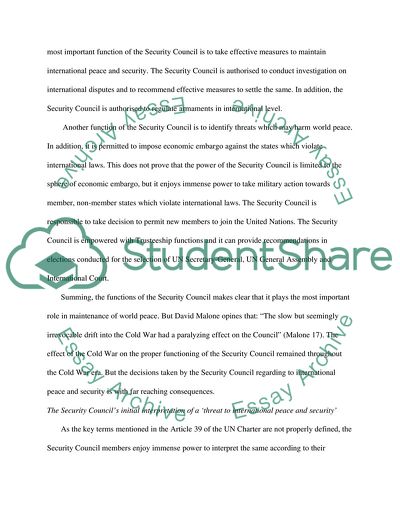Cite this document
(The United Nations Security Councils Interpretation of a Threat to Research Paper, n.d.)
The United Nations Security Councils Interpretation of a Threat to Research Paper. Retrieved from https://studentshare.org/politics/1732532-the-united-nations-security-councils-interpretation-of-a-threat-to-international-peace-and-security-within-article-39-of-the-un-charter
The United Nations Security Councils Interpretation of a Threat to Research Paper. Retrieved from https://studentshare.org/politics/1732532-the-united-nations-security-councils-interpretation-of-a-threat-to-international-peace-and-security-within-article-39-of-the-un-charter
(The United Nations Security Councils Interpretation of a Threat to Research Paper)
The United Nations Security Councils Interpretation of a Threat to Research Paper. https://studentshare.org/politics/1732532-the-united-nations-security-councils-interpretation-of-a-threat-to-international-peace-and-security-within-article-39-of-the-un-charter.
The United Nations Security Councils Interpretation of a Threat to Research Paper. https://studentshare.org/politics/1732532-the-united-nations-security-councils-interpretation-of-a-threat-to-international-peace-and-security-within-article-39-of-the-un-charter.
“The United Nations Security Councils Interpretation of a Threat to Research Paper”, n.d. https://studentshare.org/politics/1732532-the-united-nations-security-councils-interpretation-of-a-threat-to-international-peace-and-security-within-article-39-of-the-un-charter.


